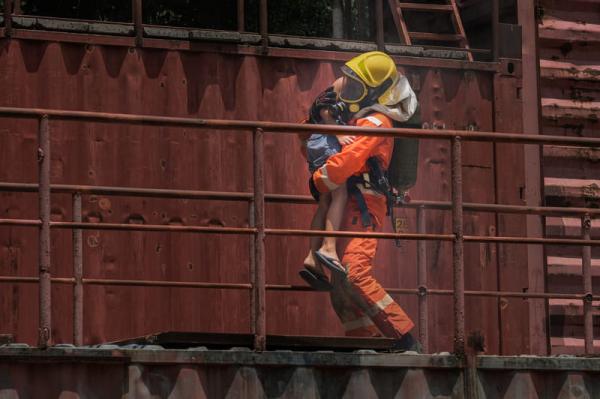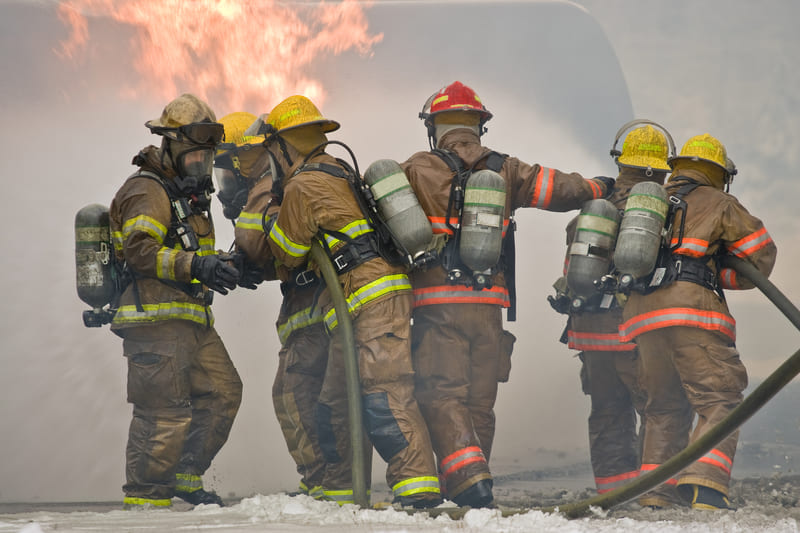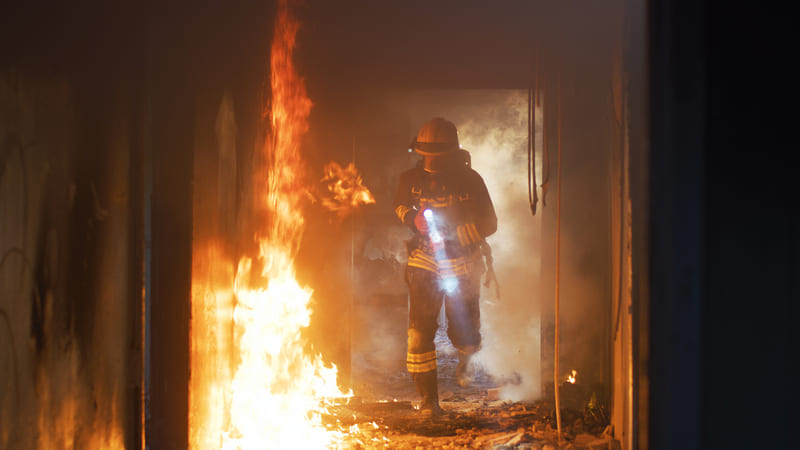Blog Post
Fire Fighting Course: From Fire Dreamer To Fire Stopper

Have you ever dreamt about becoming a firefighter? Racing to the rescue in the iconic red fire truck, and saving the lives of citizens? The journey of an aspiring hero can be filled with excitement, challenges, and an immense sense of fulfilment. EMCARE offers a comprehensive set of fire fighting courses which have been specifically designed to transform your childhood dream to reality.
Join us, today, as we take you through some of the courses we have on offer, which will equip you with the essential steps and training to fast-track your way to becoming a true firefighter.
Fire Fighting Course: From Crawling To Your First Steps
All heroes need to crawl before they can run - and for future firefighters, this starts with understanding the basics.
The Basic Fire Awareness Course (BFA) is a short course specifically designed to equip learners with the knowledge and skills to manage and extinguish fires in a myriad of contexts. This half-day fire fighting course covers essential fire safety principles, such as the fire tetrahedron, which deconstructs all the chemical chain reactions in fires, and the different classes of fire.
Participants will also be expected to learn more about protective equipment and different extinguishing mediums, to make sure these individuals understand the fundamentals of fire fighting.
The BFA course also delves deeper into the requirements and functional operations of fire equipment, including fire hose reels, fire buckets, and fire blankets. Practicum components are crucial in any fire fighting course, as they give learners a realistic toolkit to manage future emergencies.
The BFA course establishes solid foundations and enables individuals to handle future unexpected emergencies with the utmost confidence, so that they can act swiftly without unnecessarily endangering themselves or any bystanders.
Fire Fighting Course: Embracing The Challenge
Once you have mastered your first baby steps in the world of fire fighting, and know how to properly handle the firehose: you are ready to take on some more responsibility:
The Basic Fire Fighting / Fire Marshal Course (BFF) equips learners with the knowledge and understanding to identify, contain, prevent, and extinguish different types of fires, with the use of basic fire fighting equipment. This one-day fire fighting course is a mere extension of the previously learned basics - teaching individuals how to give warnings of a fire, understand the combustion process, and effectively use various extinguishing mediums, such as water, foam, carbon dioxide, and dry chemical powder.
Participants will also be expected to learn about the care and maintenance of fire fighting equipment, the trend of fire spreading, and essential fire prevention techniques. The course also includes practical training on fire suppression with hose and hydrant operations, types of fire attacks, and the basics of emergency planning. This course will take you just that extra step closer to becoming a proactive first responder.

Fire Fighting Course: Rising To The Occasion
As your skills and confidence grow, the Intermediate Fire Fighting Course (IFF) becomes your next milestone. This course runs over two-days and encompasses all of the knowledge and skills gained in the BFF course, with a special emphasis on practical knowledge and the use of fire fighting equipment.
Conducted at a specialised location, participants will learn fire suppression skills with hose reels and hydrants, perform varying types of fire attacks, and engage in practical exercises designed to enhance their skill. The IFF also includes advanced training on fire prevention principles and techniques to make sure you're feeling more and more confident with each stride you take on this fire fighting journey.
Fire Fighting Course: Tackling The Toughest Challenges
Fire fighters will often come face-to-face with situations that call for more specialised fire fighting courses. The Hazardous Material Handling Course (HMH) course equips the learner for such situations, with knowledge to identify incidents involving hazardous materials and certain preventative protocols to follow whilst calling in assistance.
Over two days, individuals will learn crucial specialised skills, such as complex situational problem solving, and how to use transportation placards, labels and markings.
Notably, the Confined Space Entry Course (CS) focuses on further diversifying the prospective fire fighter with the skills to handle the dangers of confined spaces, specific legislation, and the necessary equipment for safe entry and exit.
Fire Fighting Course: Fire Fighting I & II and Hazmat Courses
Now, you should be at the pinnacle of your professional fire fighting training. You have built confidence and the professional skills and expertise to handle complex fire scenarios. It is time to take the Fire Fighter I & Hazmat Awareness Course and the Fire fighter II & Hazmat Operations Course.
The Fire Fighter I course is a specifically career-oriented program to take your fire fighting career to the next level. This nine-week course is internationally accredited by IFSAC and based on NFPA 1001 standards, includes a well-constructed program which dually focuses on the practical and theoretical teachings. Individuals can also expect hazmat awareness training, which equips individuals with the necessary skills to handle hazardous materials emergencies at the awareness level.
The Fire Fighter II course builds on the fire fighting I course, offering an additional seven weeks of advanced training in fire department communications, scene lighting, vehicle extrication, fire control, and incident management. The further enriched hazmat training prepares individuals to act defensively during complex hazardous material emergencies.

Take The Steps To Become The Hero You're Meant To Be
Your journey towards your fire fighting destiny consists of courage, dedication, and relentless pursuit. EMCARE's comprehensive fire fighting courses provide the foundation to achieving this destiny. Expect to feel supported and propelled into your future, one where you can make a difference.
Expect to save lives and be in the line of fire, fully prepared for any type of emergency. The difference lies in you, and your potential is waiting to be tapped into. Explore EMCARE's extensive range of fire fighting courses and take the step to turning your dream into reality.
GET IN TOUCH
There are a few ways to reach us below. Please feel free to contact us via phone, email or you can send us a message via the form provided and we will get back to you.




















